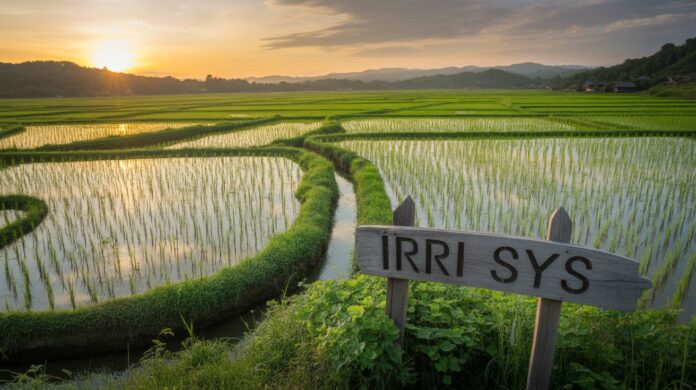What is Irri Sys?
Irri Sys stands for Irrigation Systems, which are methods used to supply water to soil and crops when rainfall is insufficient. It is one of the oldest and most effective tools for agriculture. Without irrigation, many regions would simply not be able to grow enough food.
Irrigation is not just for farmers. Even people with small gardens or lawns rely on some form of Irri Sys, whether it’s a sprinkler or a simple hose with a timer.
Types of Irrigation Systems
1. Surface Irrigation
This is the oldest and simplest form, where water flows over the soil surface, usually through canals or ditches. Farmers in villages often dig small channels from rivers or wells to flood their fields. While inexpensive, it wastes a lot of water.
2. Sprinkler Irrigation
Sprinklers mimic natural rainfall by spraying water over plants. I have personally seen this method in large farms in Punjab, where big rotating sprinklers spread water evenly. It saves labor but requires proper setup.
3. Drip Irrigation
This is one of the most efficient systems. Water is delivered directly to the plant roots through pipes and emitters. A friend of mine installed drip irrigation in his vegetable farm, and his water usage dropped by half while the crop yield increased.
4. Subsurface Irrigation
Here, water is delivered underground directly to plant roots. It prevents evaporation but can be costly.
5. Smart Irrigation Systems
Technology has brought automation into irrigation. With IoT sensors, weather data, and mobile apps, farmers can now control water supply more intelligently. For example, in California, some vineyards use soil sensors to water only when the ground is dry.
Benefits of Irri Sys
- Increased Crop Yield: Plants get consistent water, leading to better growth.
- Efficient Water Use: Especially important in drought-prone areas.
- Better Soil Health: Prevents soil from drying out or cracking.
- Flexibility: Works for farms, greenhouses, and even home gardens.
I remember when my uncle in Sindh shifted from flood irrigation to drip irrigation. His mango orchard not only produced more fruit but also saved a huge amount of water.
Challenges and Risks
While irrigation is powerful, it comes with challenges:
- High Cost: Modern systems like drip and sprinkler require investment.
- Maintenance: Pipes and pumps can clog or break.
- Waterlogging: Over-irrigation can damage soil.
- Technology Gap: Small farmers in rural areas may struggle to adopt advanced systems.
Irri Sys in Agriculture
Agriculture depends heavily on irrigation. Countries with strong irrigation systems can grow crops even in dry seasons. In Pakistan and India, canal systems have been lifelines for wheat and rice farming. Similarly, in the Middle East, drip irrigation helps grow crops in deserts.
Irri Sys in Home Gardening and Landscaping
For small gardens, sprinklers and drip kits are perfect. They save time and ensure that plants are watered regularly. I installed a simple timer-based sprinkler in my lawn, and it completely changed my morning routine — no more dragging the hose around every day.
Smart and Modern Irrigation Systems
The future of irrigation lies in automation and data-driven farming. Smart systems use sensors to check soil moisture and weather conditions before releasing water. Mobile apps allow farmers to manage irrigation remotely. These technologies reduce waste and improve yields.
Personal Experiences and Insights
When I was younger, I used to help my grandfather water his fields manually with buckets and channels. It was tiring and inefficient. Today, I see farmers in the same area using drip and sprinkler systems, and the difference is remarkable. The crops look healthier, and water use is controlled.
But I’ve also seen cases where expensive irrigation systems failed because they were not maintained properly. Pipes clogged, pumps broke, and the farmers went back to old methods. This shows that while Irri Sys is powerful, it requires commitment and care.
How to Choose the Right Irri Sys
- Crop Type: Vegetables benefit more from drip irrigation, while wheat may work with surface irrigation.
- Soil Type: Sandy soils need frequent watering, so drip may be better.
- Budget: Advanced systems cost more but save water in the long run.
- Climate: In hot regions, sprinklers and drip are better than surface flooding.
Conclusion
Irri Sys, or irrigation systems, are the backbone of modern farming and gardening. They ensure steady water supply, improve crop yield, and make agriculture possible in areas with low rainfall. While there are challenges like cost and maintenance, the benefits are undeniable.
From traditional canals to smart irrigation apps, the evolution of Irri Sys shows how vital water management is for our future. Choosing the right system depends on your needs, budget, and environment, but one thing is clear — water efficiency will shape the future of farming.
FAQs
Q1: What does Irri Sys mean?
It refers to irrigation systems used in agriculture, landscaping, and gardening.
Q2: Which irrigation system is most efficient?
Drip irrigation is often considered the most efficient because it delivers water directly to plant roots.
Q3: Can Irri Sys be used at home?
Yes, homeowners use sprinklers, drip kits, and timers for lawns and gardens.
Q4: What are the main problems of irrigation?
High cost, maintenance, and risks of over-irrigation leading to waterlogging.
Q5: What is the future of irrigation systems?
Smart irrigation with sensors, automation, and mobile apps will lead the future of water management.


